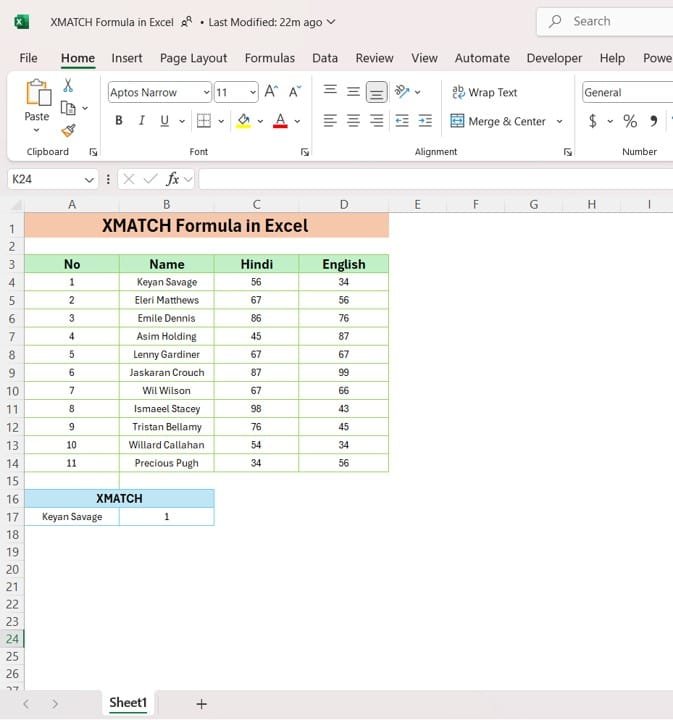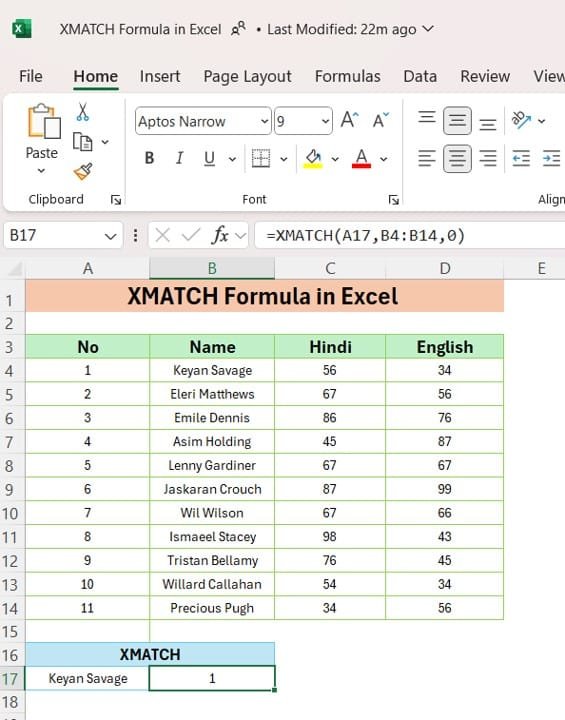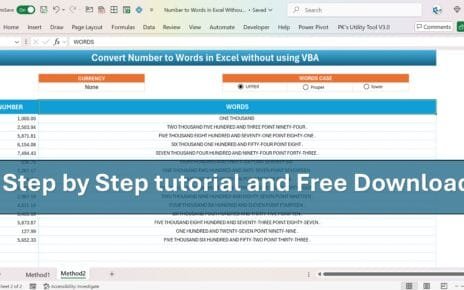In this blog post, we’ll walk you through the XMATCH formula in Excel with practical examples. This powerful function helps find the position of values in each range efficiently, which can streamline tasks such as data lookups. Whether you’re a beginner or a seasoned Excel user, this guide will make the concept of XMATCH crystal clear.
What is the XMATCH Formula?

The XMATCH function is a versatile lookup tool that searches for a specific item in a range of cells and returns its relative position. Unlike its predecessor, the MATCH function, XMATCH offers advanced functionality by supporting exact, wildcard, or binary matching modes. You’ll find it incredibly useful for retrieving data positions quickly, especially when working with structured datasets.
Use Case: Understanding the XMATCH Formula with Practical Data
Let’s dive into a real example to demonstrate how to use XMATCH in Excel effectively. Below is the dataset we’ll work with, consisting of four columns: No., Name, Hindi, and English scores.
In this example, we aim to locate the position of a specific name (e.g., “Kenyan Savage”) from the Name column using the XMATCH formula.
How to Use the XMATCH Formula – Step-by-Step

Identify the Lookup Value:
We want to find the position of “Kenyan46 Savage” from the Name column (B3).
Write the XMATCH Formula:
The formula syntax for XMATCH is:
=XMATCH (A17, B4:B14, 0)
- A17 is the lookup value (the name we’re searching for).
- B4
is the range where we are searching for the name.
- 0 specifies that we are looking for an exact match.
Output of the Formula:
When you apply this formula, Excel returns the position of the value in the specified range. In our case:
XMATCH (“Kenyan Savage”, B4:B14, 0) → 1
This means that “Kenyan Savage” is located at position 1 within the specified range.
Why Use XMATCH Instead of MATCH?
The XMATCH formula has several advantages over the traditional MATCH function:
- More Flexibility: XMATCH supports exact, wildcard, and binary searches.
- Backward and Forward Search: XMATCH can search in both directions (up or down).
- Compatibility with Arrays: Works seamlessly with dynamic arrays, making it more future proof.
Real-Life Applications of XMATCH
- Finding Student Grades: Easily locate the position of a student’s name or grade in a large dataset.
- Inventory Management: Quickly find the position of an item in stock records.
- Employee Records: Use XMATCH to search for employee names or ID numbers within HR data.
Common XMATCH Errors to Watch Out For
Even though the XMATCH function is straightforward, errors can happen. Here are a few to be aware of:
- #N/A Error: This occurs if the lookup value doesn’t exist in the given range.
- #VALUE! Error: Make sure that the lookup value type matches the data in the lookup range (e.g., text or number).
- Exact Match Requirement: When using 0 for exact match, ensure the spelling and case of the lookup value are correct.
Conclusion
The XMATCH formula is a powerful tool that makes searching for data positions easier in Excel. With its versatile matching options and support for dynamic arrays, it’s a must-know function for anyone working with data. As you’ve seen in this example, finding the position of “Keyan Savage” was a breeze using the XMATCH formula.
Visit our YouTube channel to learn step-by-step video tutorials
View this post on Instagram
Click hare to download the practice file



